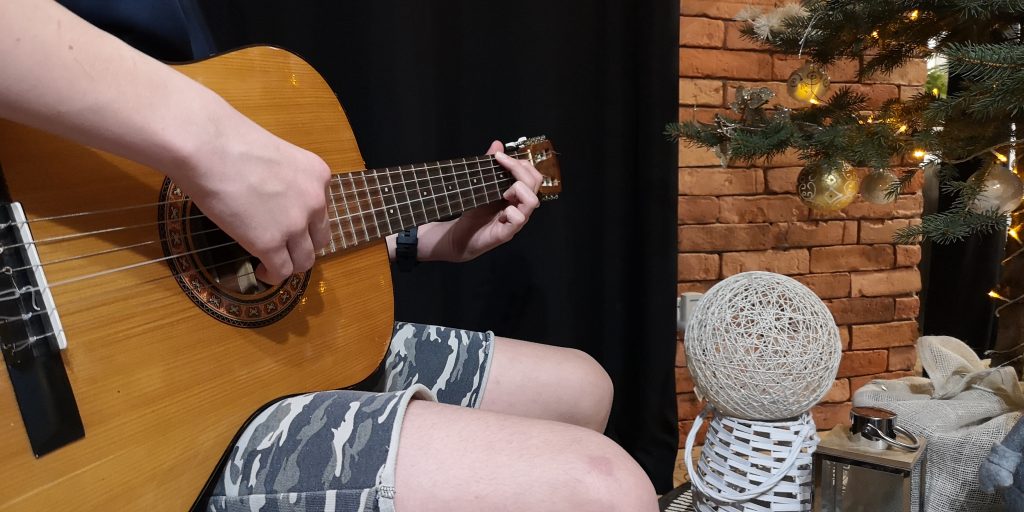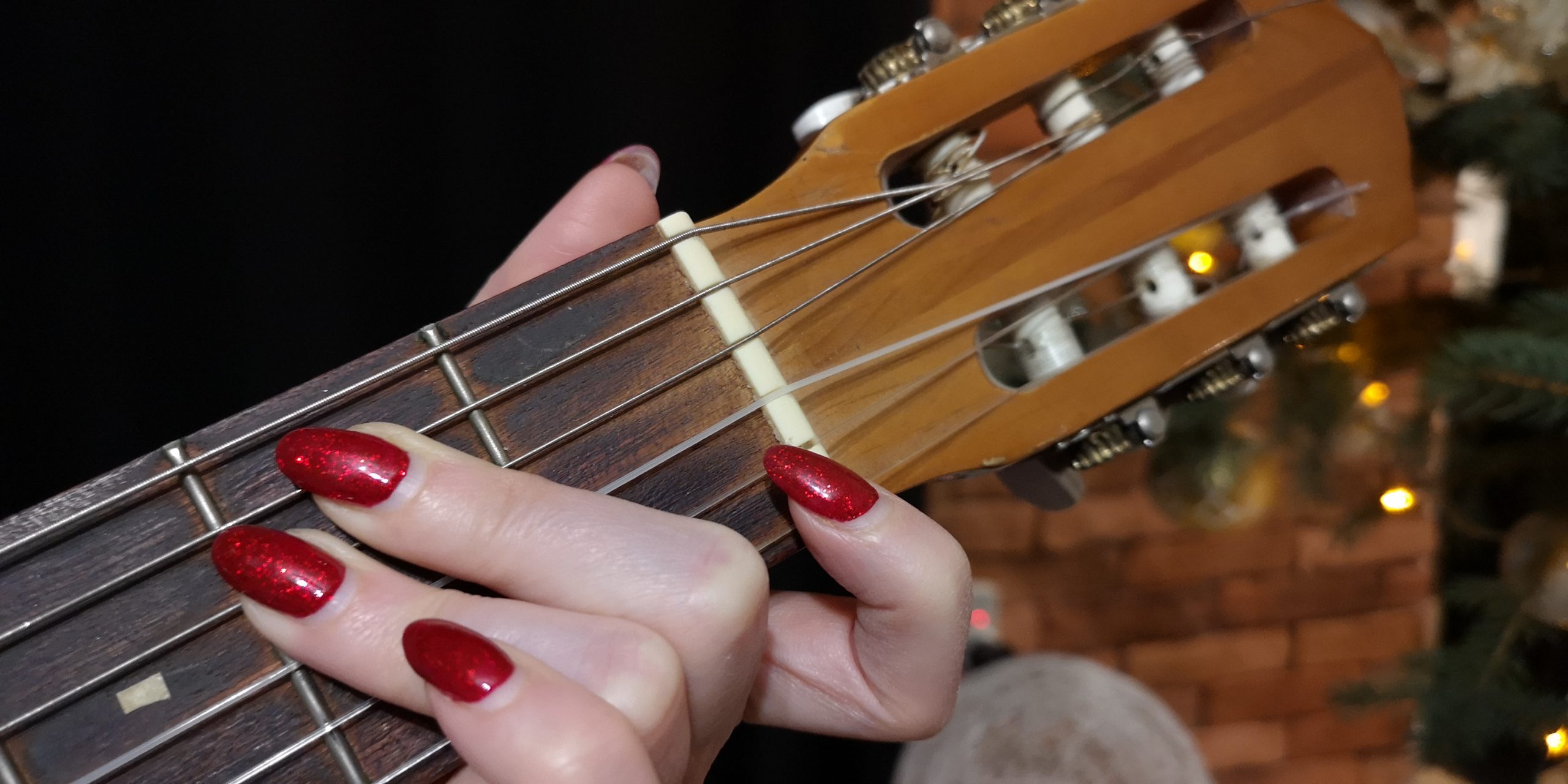In this article we will answer your bothering questions about choosing your first guitar instrument.
We will consider the two most frequently chosen analog instruments, excluding the electric guitar, i.e. the classical Spanish guitar and the acoustic guitar.
Many people ask us which guitar will be the best to learn for both a child and an adult.
We will take into account many criteria, such as the ease of learning. Possibilities of application in the further career.
History of the classical guitar
The oldest guitar instrument, much older than the acoustic guitar, is the classical guitar which originates in Spain.
Musicians playing styles of Music such as Flamenco use classical guitars.
In many music schools in Europe and the United States of America, children are taught only classical guitars.
Features of the construction of a classical guitar
What’s the easiest way to recognize a classical guitar?
The answer is: after the strings, the classical guitar has all nylon strings (a type of plastic), so we will not find metal strings in it.
The second way to recognize a classical guitar is the width of the neck at the headstock, i.e. in the narrowest place – right next to the tuning keys.
The fretboard here is wider in the “classic” than in the acoustic guitar.
Classical guitar playing techniques
You can also recognize the classical guitar by its playing technique – especially when performing classical Spanish pieces.
Restrictive orthodox schools of learning to play the classical guitar indicate that the Spanish classical guitar is always played with fingers and we do not use the cost for this purpose.
In addition, the position of the fingers when playing the classical guitar is very characteristic: the thumb rests on the thickest E string and plucks the e string and the A string directly below it.
The other fingers are used to move the strings below that is D, G, B and high E.
Of course, all styles of music can be played on the classical guitar with so-called open chords as well as solo parts.
How is a classical guitar tuned?
Most guitarists tune their 6-string guitars in the so-called classic outfit. Starting with the thinnest string, the notes will be E1, B2, G3, D4, A5, E6.
Here is some classic guitar models:
Acoustic guitar – construction and purpose
Without going into details about the historical aspects of the creation of the acoustic guitar, we will discuss its construction and application.
The purpose of the creation of the acoustic guitar was the need to create an instrument that would be louder than the classical guitar: it gave a more resonant sound compared to the classical guitar, it allowed for greater expression, which was necessary to be able to use it, for example, when playing together with an orchestra or a larger ensemble equipped with e.g. wind instruments.
How to recognize an acoustic guitar’s – easy way
First, the acoustic guitar has metal strings, sometimes some models have some metal sides and some nylon sides.
Usually, acoustic guitars have a much larger body in order to make their sound louder and more resonant.
The acoustic guitar has a narrower neck in the headstock, it is very similar to the neck of an electric guitar.
You can even say that the electric guitar is an acoustic guitar with a soundboard removed in the place where electronic pickups are inserted.
Different techniques are used to play the acoustic guitar depending on the style of music used.
Which guitar is easier to play acoustic or classical?

If I were to answer this question, I would have to meet a person who wants to study. Nevertheless, it should be fairly simple for most people.
It is definitely better to start learning how to catch simple open chords with a classical guitar because the strings are more distorted and it is easier to control the arrangement of your fingers or to detect mistakes.
Nevertheless, if the music adept is very young and has small fingers, he may have a problem with catching a certain grip on a full-size 4 by 4 classical guitar. It may turn out to be too big for him.
Then, most often, in music schools, a 1/2 or 3/4 size classical guitar is recommended.
It is also important that the metal string in the acoustic guitar will make larger prints on our fingers. Metal strings are less pleasant to the touch, so bear this in mind, as it may discourage beginner musicians.
Due to the metal strings, the acoustic guitar has a greater force of tension. This makes the acoustic instrument louder. However, it should be remembered that in order for the sound played on an acoustic guitar to be clear, the strings should be pressed harder against the neck than in a classical one. Simply put, our fingers must be much better trained.
For this reason, I subjectively estimate that it is better to start playing with a classical guitar and only when we have mastered the basics of the playing technique, we can switch to an acoustic guitar. Especially if we want to play together with an orchestra or other ensemble.
If we are young, we should choose a classical guitar in a smaller size. Nylon strings in such a guitar will be larger, softer will not cause finger fatigue and fingerprints. Metal strings can give our fingertips a good impression.
It is natural for us to feel pain to our fingertips during the beginning of the game. Over time, they will become more resistant and get used to the pressure of the hard parts of the guitar.
The price of a classical guitar versus the price of an acoustic guitar which is more expensive
The cost of purchasing a guitar is a topic for a separate article, however, in general, the prices of acoustic guitars of a similar class are higher due to the need to use stronger materials and metal reinforcements in the neck, metal strings and more durable bridges.
The classical guitar, on the other hand, has a fairly simple structure. Cheap classical guitars have unregulated bridges that are very easy to tie nylon strings on as the tension force of nylon strings is much lower.
Advantages and disadvantages of acoustic and classical guitars
The positive pressure of the classical guitar should include the ease of catching chords with a large hand softer strings, a lower purchase price and greater popularity of this instrument in music schools
The disadvantages of classic guitars include a quieter sound when performing accompaniment with an orchestra and the inability to play some techniques, for example with a clang.
The most important advantages of an acoustic guitar include a more metallic expressive sound that is less muffled, which allows for more expressive playing.
In addition, the acoustic guitar allows the use of various interesting, very advanced playing techniques that cannot be achieved on a classical guitar.
The harder structure of the acoustic guitar allows, for example, to “bend” the strings and generally make the playing sharper and harder.
Some techniques that can be safely used in acoustics – could damage a classical guitar, eg a bridge, or detach the neck.
On the other hand, the disadvantages of actuality in relation to the classical guitar are as follows:
An acoustic guitar has harder strings, so we have to press no harder to get a clean sound. The fingers of an inexperienced musician will get tired faster.
In addition, the purchase of an acoustic guitar is more expensive. Especially if we choose a variant with built-in microphones, the so-called electro-acoustic guitar, which can be used with a sound system.
There are also electro-classical guitars on the market, but this is definitely a niche group.
Summary
Summing up our considerations, we believe that the best choice for a beginner guitarist will be a classic guitar – of course in a size adapted to his abilities and height.
Only after mastering the basics of the playing technique and when we want to use the accompaniment of people and perform on stage, it is worth considering switching to an acoustic guitar.
An alternative path of development after the classical guitar is the choice of the electric guitar.
These guitars in their construction in the context of the neck, strings and bridge are practically a copy of an acoustic guitar.
By using appropriate amplifiers and effects, we are able to simulate an acoustic guitar with an electric guitar and practice dedicated techniques.
We can obtain the reverberation of the resonant body of an acoustic guitar by means of electronic devices using an electric guitar, but this is a topic for another article.
We invite you to comment

One Reply to “Classical or acoustic guitar – what to choose”